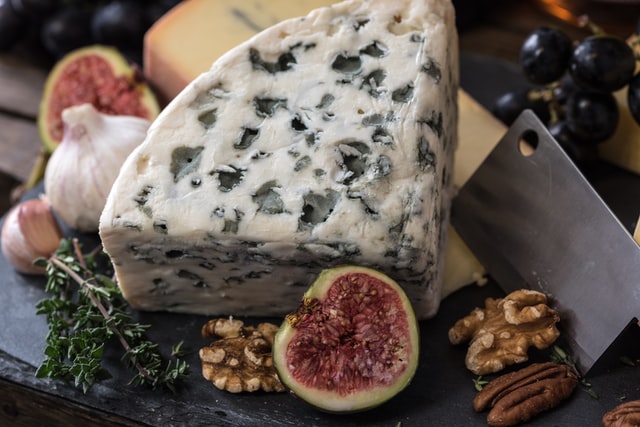
Blue Cheese History
Today is National Moldy Cheese Day! Yes, that's really a thing. So - this week we are going to talk about those cheeses with the blue/green (or grey, or black) mold veins that run through them. Hopefully you don't think this stinks!
What exactly is blue cheese? Is it blue or bleu? Depends on where you are. The English types of produced cheeses are "blue" and in France, "bleu". By definition, blue cheese is a classification of cheeses that are produced from cow, sheep, or goats milk, that have penicillium cultures in them. Penicillium? Like Penicillin? Yep - and I'll get back to that in a minute. The veins of mold are created by spiking the cheese with stainless steel rods during the production phase to allow oxygen to circulate through the cheese and promote the growth of the mold.
Now, I can't tell you the first time blue cheese was eaten. I can however tell you that it can be found mentioned in history registers dating back to the first century AD, and at one point it was referred to as the cheese of Kings and Popes. I can also tell you that with any good story, there is probably some sort of legend laying claim to its foundation. Roquefort (one of the most famous French bleu cheeses) is no exception.
And the story goes... oh, and BTW, its a lost connection love story... that one day a young sheepherder was sitting in a cave eating a lunch of ewe's milk cheese curds and bread when he spotted a very beautiful woman. The young sheepherder left behind his lunch in pursuit of love and happiness, but to his dismay, after several days of searching for this beautiful maiden, he ceased his pursuit and returned home lonely hearted - to come back and find the lunch he left in the cave moldy and green. As he was starving, he tasted the cheese anyway, and to his surprise, it was fantastic! The penicillium Roqueforti that was alive in the cave transformed his cheese curds into Roquefort!
Roquefort is so special to the south of France, in 1925 it was the first recipient of France's Appellation d'Origine Contrôlée - which regulates the manufacturing of the French cheeses, wines, butters, and other agricultural products . Also, Roquefort is specifically made from the milk of the Lacaune sheep - which only produces 16 gallons of milk each, per season. 1 Kilo (2.2 lbs) of Roquefort cheese is made from 1.2 gallons of milk - making Roquefort one of the rarest bleu cheeses on the market. So - next time you see that Roka stuff, know that it's nothing but a designer imposter!!! Don't fall for the marketing - and since it's fake, they can't even spell it the same! For all of you blue cheese dressing lovers, I have a great one below for you - please stop buying it!
Oh and one last fun fact - before Alexander Fleming discovered penicillin in 1928, for hundreds of years shepherds would put blue cheese in open wounds to avoid getting gangrene.
